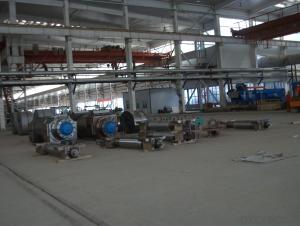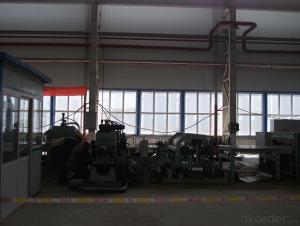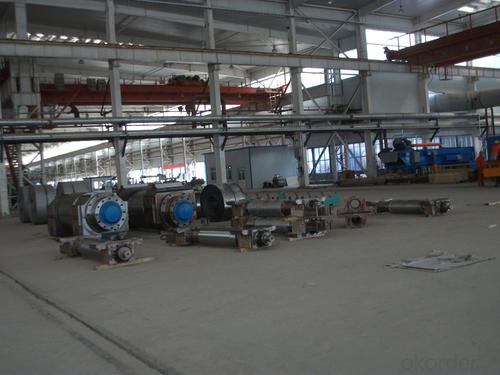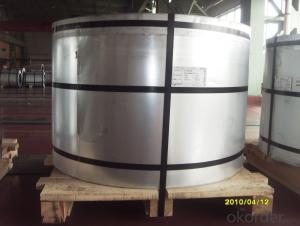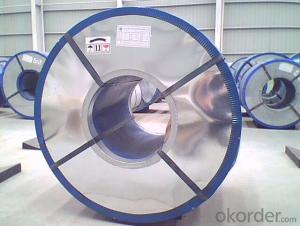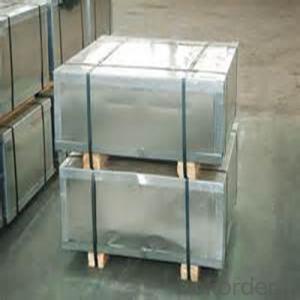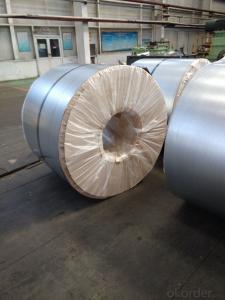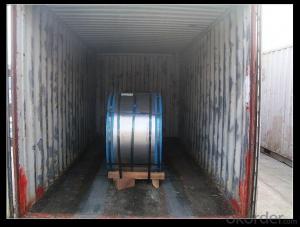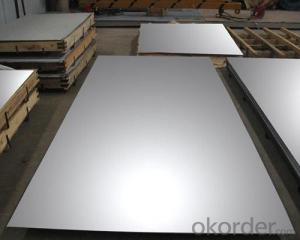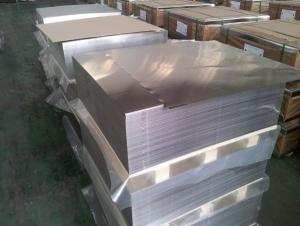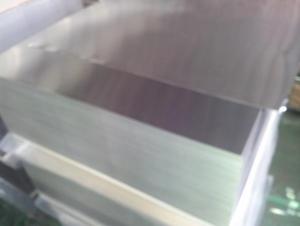Electrolytic Tinplate for Food Containers Useage
- Loading Port:
- Qingdao
- Payment Terms:
- TT OR LC
- Min Order Qty:
- 25 m.t.
- Supply Capability:
- 30000 m.t./month
OKorder Service Pledge
OKorder Financial Service
You Might Also Like
1.Structure of Electrolytic Tinplate for Food Containers Useage Description
Electrolytic Tinplate is a thin steel sheet coated by tin. It has an extremely beautiful metallic luster as well as excellent properties in corrosion resistance, solder ability, and weld ability.
2.Main Features of the Electrolytic Tinplate for Food Containers Useage
Electrolytic Tinplate undoubtedly enjoys the pride of place as a packaging medium especially for food. It owes its unique position to its "nine layer sandwich structure", each of which contributes to its eminence as a packing material. The steel base of electrolytic tinplate provides the necessary strength and formability for can fabrication. The tin-iron alloy layer provides the bond between the steel and free tin layer. The free tin layer is not only responsible for the attractive bright finish and ease of solderability but is also non-toxic- a factor of vital importance in food packaging!
Tinplate is also widely used for making all types of containers such as food cans, beverage cans, and artistic cans, tea cans, painting cans, chemical package cans and dry food package cans, metal printing etc. Its applications are not limited to containers; recently, electrolytic tinplate has also been used for making electrical machinery parts and many other products.
3.Electrolytic Tinplate for Food Containers Useage Images
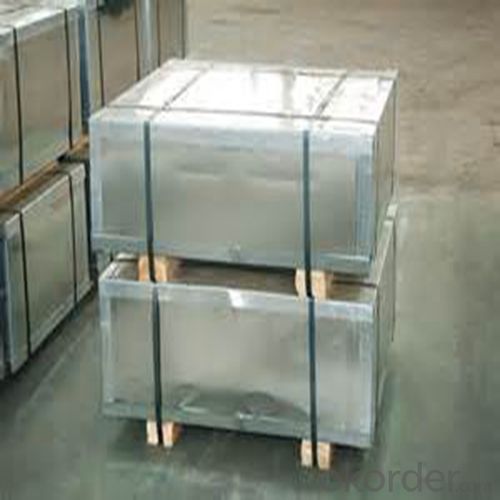
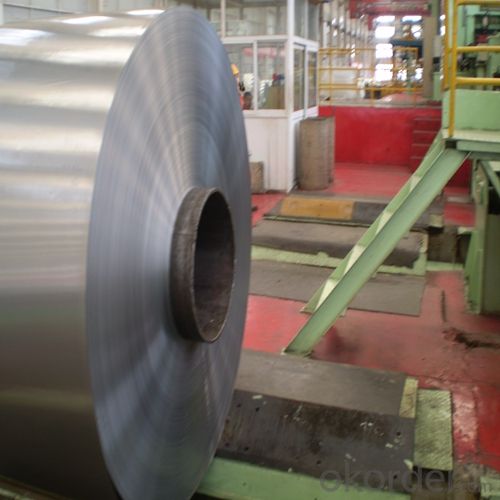
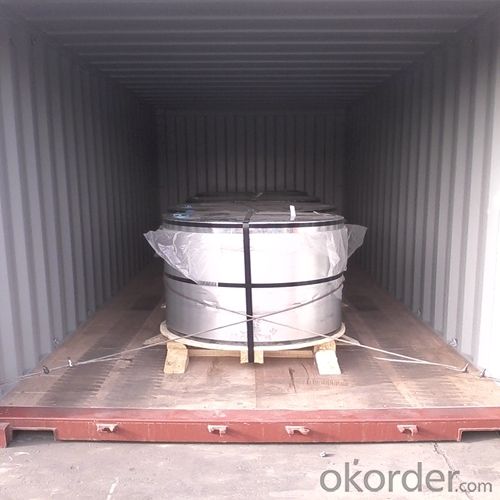
4 .Electrolytic Tinplate for Food Containers Useage Specification
Standard: ISO 11949 -1995
Material: SPCC
Thickness:0.175mm
Width: 600mm
Temper: T4
Annealing:CA
Coil Inner Diameter: 508mm
Weight: 6-10 tons/coil 1~1.7 tons/sheets bundle
Passivation:311
Oil: DOS
Surface: Finish
5.FAQ of Electrolytic Tinplate for Food Containers Useage
1. What is the delivery time for your prime quality tinplate?
Usually 35 days after order confirmation.
2. What is your Minimum Order Quantity?
Usually MOQ is 50tons for one single size, for trial order, it can be 25 tons.
3. What is the payment term?
The most common we use is L/C at sight or TT. We can also try use other terms.
- Q: What is the shelf life of products packaged in tinplate?
- The shelf life of products packaged in tinplate can vary depending on the specific product and its storage conditions. However, tinplate is known for its excellent protection against moisture, light, and oxygen, which helps to extend the shelf life of packaged goods. Generally, products packaged in tinplate can have a shelf life ranging from several months to years, ensuring product freshness and quality for an extended period.
- Q: What are the advantages of using tinplate for pharmaceutical packaging?
- There are several advantages of using tinplate for pharmaceutical packaging. Firstly, tinplate is highly resistant to corrosion, ensuring the integrity and safety of the pharmaceutical products. Secondly, tinplate provides excellent barrier properties, protecting the contents from moisture, light, and oxygen, which can degrade the quality and efficacy of medications. Additionally, tinplate is sturdy and durable, providing adequate protection during transportation and storage. Finally, tinplate is easily recyclable, making it an environmentally friendly choice for pharmaceutical packaging.
- Q: Can tinplate be used for packaging frozen food?
- Yes, tinplate can be used for packaging frozen food. Tinplate is a type of steel coated with a thin layer of tin, which provides excellent protection against moisture and oxygen. This makes it an ideal material for packaging frozen food as it helps to preserve the quality and freshness of the product. Additionally, tinplate is also resistant to extreme temperatures, ensuring the integrity of the packaging even in freezing conditions.
- Q: How to test the tightness of tin metal cans?
- The empty tank which has been cleaned can be dried by 35, and the pressure or pressure leak test shall be carried out according to the equipment condition of each unit. B.1 pressure leak test, the empty tank will be carefully injected into the water until eight or nine into full, the rubber ring will be placed in the appropriate plexiglass plate at the opening side of the roll, so that it can be sealed. Start the vacuum pump, turn off the bleeder valve, hold down the cover by hand, control the pumping, and make the vacuum gauge rise from 0Pa to 6.8X10 PA (510mmHg) for more than 1min, and keep the vacuum above 1min.
- Q: What is the average lifespan of tinplate packaging?
- The average lifespan of tinplate packaging varies depending on various factors such as storage conditions, handling, and usage. However, when properly maintained, tinplate packaging can last for several years, providing durable protection for the packaged goods.
- Q: Why tin printing after a layer of light oil
- Bright oil is common in epoxy resin, alkyd resin, acrylic resin, acrylic amino, etc., the composition is different, the performance is also different, and the use is not the same. Usually according to the process whether there is a deep stamping deformation, welding local high temperature heating and the need for high pressure cooking and so on, choose different types of varnish.In order to increase production efficiency and save energy, in general, the last printing process is combined with the glazing process.In addition to the roller coating can be used, but also can be printed light ink method, both gloss is not much difference, but the processing performance is better than roller coating.
- Q: What is the purpose of tinplate coating?
- The purpose of tinplate coating is to provide a protective layer of tin on steel or iron surfaces to prevent corrosion and enhance the appearance of the material.
- Q: Can tinplate be used in extreme temperatures?
- Yes, tinplate can be used in extreme temperatures. Tinplate is known for its excellent heat resistance properties, making it suitable for applications in extreme temperatures. The tin coating on the steel substrate provides protection against corrosion and helps maintain the structural integrity of the tinplate even in high or low temperature environments.
- Q: How is tinplate coated with organic materials?
- Tinplate is typically coated with organic materials through a process called lacquering or varnishing. The organic coating, usually a resin-based material, is applied to the tinplate surface in a controlled manner, forming a protective layer that prevents corrosion, enhances durability, and provides a decorative finish.
- Q: What are the safety regulations for using tinplate in food packaging?
- The safety regulations for using tinplate in food packaging vary depending on the country. However, generally, tinplate used for food packaging should comply with regulations set by food safety authorities such as the FDA in the United States or the European Food Safety Authority in the European Union. These regulations typically cover aspects such as the use of food-grade coatings, absence of harmful substances, and compliance with specific testing and labeling requirements. It is important for manufacturers to ensure that tinplate used in food packaging meets these safety regulations to ensure the protection of consumers' health.
Send your message to us
Electrolytic Tinplate for Food Containers Useage
- Loading Port:
- Qingdao
- Payment Terms:
- TT OR LC
- Min Order Qty:
- 25 m.t.
- Supply Capability:
- 30000 m.t./month
OKorder Service Pledge
OKorder Financial Service
Similar products
Hot products
Hot Searches
Related keywords
